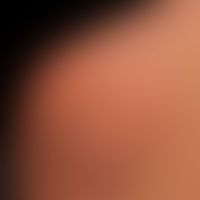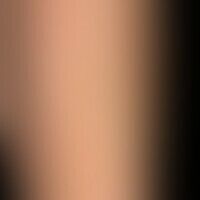Image diagnoses for "skin-colored"
267 results with 583 images
Results forskin-colored

Alopecia androgenetica in women L64.-

Morton's mark
Chronic lymphoedema with positive Stemmer's sign. Massive indurative swelling of the back of the toes with bulging transverse wrinkles.

Atheroma L72.10
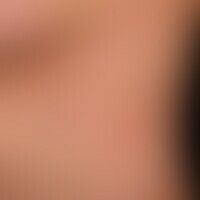
Atrophodermia idiopathica et progressiva L90.3
Atrophodermia idiopathica et progressiva: slowly progressive, large, light-grey, non-symptomatic patches (plaques)
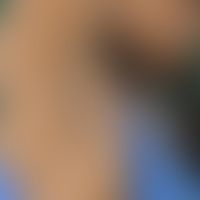
Fox-fordyce's disease L75.2
Fox-Fordyce's disease: skin-colouredpapules that are itchy, especially in cases of physical exertion associated with sweating.
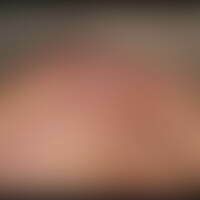
Chondrodermatitis nodularis chronica helicis H61.0
Chondrodermatitis nodularis chronica helicis. 68-year-old patient with painful nodules that have been present for three months. The pain increases permanently, especially when pressure is applied, so that the patient can no longer sleep on the right side. 0.4 cm high, very rough nodule that is painful when pressure is applied.
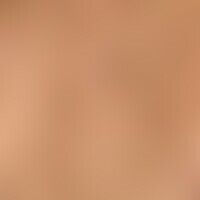
Acne conglobata L70.1
Acne conglobata. multiple comedones in the area of the back of a 53-year-old patient with A. conglobata since the age of 14. no papules or pustules. irregular skin surface with pronounced scarring. coin-sized, deep scar (almost central in the picture) after incision of an abscess.

Neurofibromatosis (overview) Q85.0
Type I Neurofibromatosis, peripheral type or classic cutaneous form. Permanent, multiple, skin-coloured, calotte-like bulging, soft, smooth papules and nodules in the area of the back of the hand and the sides of the fingers. Positive bell-button phenomenon: subcutaneous tumours protruding like hernia through the skin can be pushed back with one finger.

Raphecysts, median D29.4
Raphecyst, median: Small, benign cyst (papule) on the shaft of the penis existing since birth, asymptomatic.
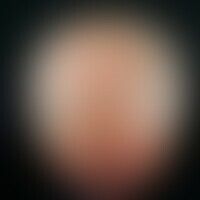
Alopecia androgenetica in men L64.-
Alopecia androgenetica in men; stage IV: horseshoe-shaped, complete clearing of the hair in the parietal region; remaining lateral and posterior crown of hair

Beau-reilsche cross furrows of the nails L60.4
Psoriatic onychodystrophy: numerous so-called pits (pit-shaped depressions in the nail matrix). in the middle of the nail, pits and transverse furrows (marked by lines). arrows and transverse bars mark damage to the nail root with shortening of the cuticle. psoriatic onycholysis marked in an arch.

Contagious mollusc B08.1
Small papular type of Mullusca contagiosa: focal sowing of small papular skin-coloured, smooth efflorescences reminiscent of verrucae planae juveniles; isomorphic irritant effect detectable.
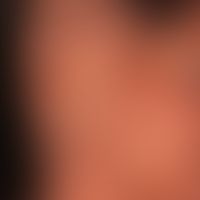
Alopecia areata (overview) L63.8
Alopecia areata: Typical clinical finding of an alopecia areata with concomitant circumscribed scleroderma.

Atrophy of the skin (overview)
Atrophy. striae cutis distensae.53-year-old patient who has been treated externally and internally with glucocorticoids for one year. striae cutis distensae without subjective symptoms. 2-3 mm wide flat atrophic lesions running in transverse direction to the skin tension with a parchment-like surface. the red tone is caused by the rupture of the connective tissue and atrophy of the surface so that vessels can shine through.
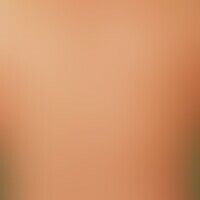
Xanthogranulomas adult (overview) D76.3
Xanthoma disseminatum: Overview with disseminated, symmetrically distributed asymptomatic papules.

